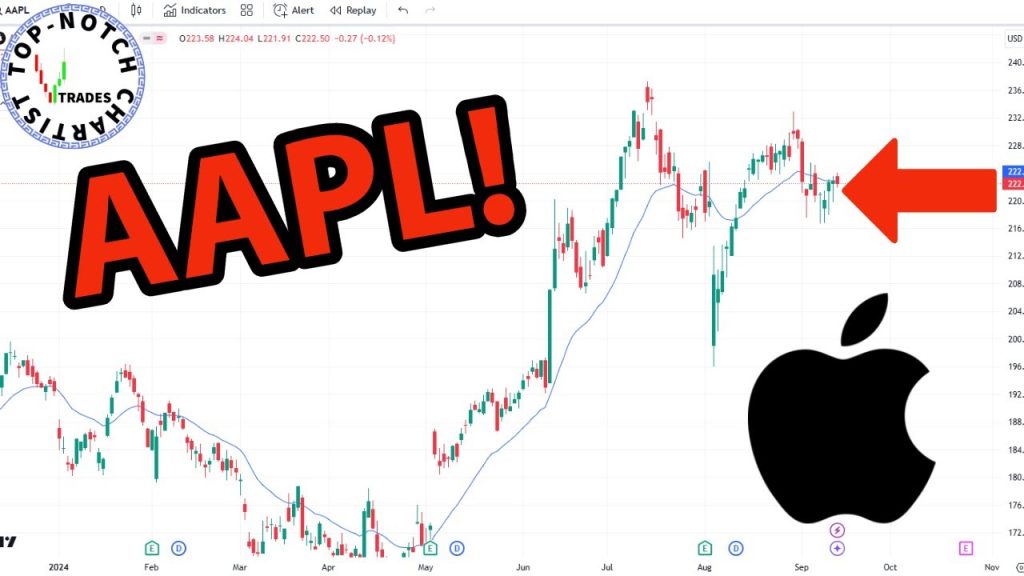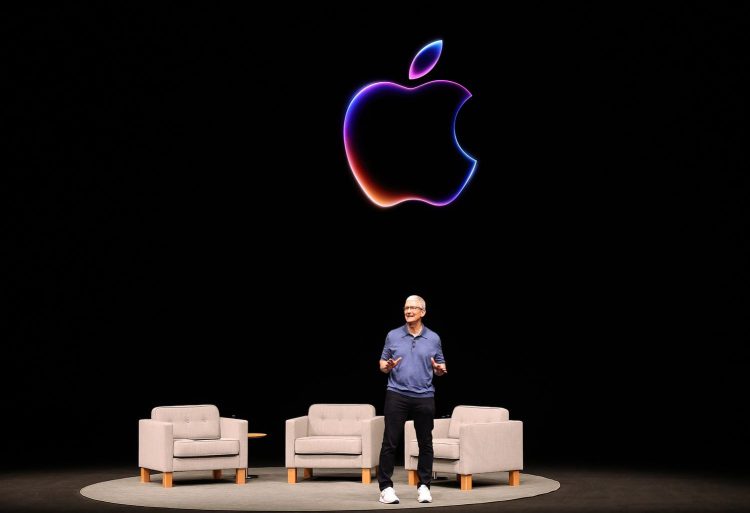Apple Inc., the Cupertino-based behemoth that redefined personal technology, remains one of the most admired and scrutinized companies in the world. With a market capitalization that has flirted with the $3 trillion mark, a fiercely loyal user base, and a product ecosystem that’s almost cult-like in its stickiness, Apple is more than just a tech stock—it’s a bellwether for global investor sentiment. But as macroeconomic uncertainty looms, growth in key markets moderates, and regulatory pressure builds, the question investors are asking has subtly shifted from “how high can it go?” to “is Apple still a safe long-term bet?”
Dividend Consistency and Capital Return Discipline
One of Apple’s most overlooked strengths is its disciplined capital return strategy. While it may not be a high-yield dividend stock like some stalwarts in the utilities or energy sectors, Apple’s dividend program is remarkably consistent and symbolically powerful. Since initiating its dividend in 2012, Apple has increased it every year—demonstrating its confidence in long-term cash flows and commitment to shareholder value.
Apple’s dividend yield hovers around 0.5%—modest at face value—but that doesn’t tell the whole story. The company complements its dividend with one of the most aggressive share buyback programs in corporate history. In its latest earnings report, Apple announced another $110 billion buyback authorization, adding to the more than $650 billion returned to shareholders over the past decade. This dual approach—modest but growing dividends, plus large-scale buybacks—makes Apple a hybrid: a growth stock that quietly acts like a cash-return machine.
For long-term investors seeking stability, this combination is critical. Apple doesn’t need to promise flashy yield; it delivers consistency, predictability, and a shareholder-first capital structure—traits that matter even more when markets become volatile.
The Apple Ecosystem: A Moat Reinforced by Behavior
If there is one reason Apple continues to outperform expectations, it’s the unbreakable grip it has on its user base. The iPhone is not just a device—it’s a portal into a tightly integrated ecosystem that includes AirPods, Apple Watch, MacBooks, iCloud, Apple Music, and more. The result is a network effect so strong that switching costs have become almost psychological in nature.
This ecosystem is the company’s most potent long-term weapon. Unlike many consumer electronics firms that sell products on a transactional basis, Apple earns recurring revenue through services, upgrades, and accessories. The installed base now exceeds 2.2 billion active devices globally, and Apple’s services business—which includes the App Store, AppleCare, iCloud, and subscription offerings—generated nearly $23 billion in revenue last quarter alone.
In an era when growth is increasingly hard-won, Apple has cracked the code of monetizing its existing customer base without turning off its brand loyalists. That’s an enviable position, and it makes Apple less vulnerable to one-time hardware sales fluctuations than many realize.
Cash Is Still King—and Apple Wears the Crown
Another pillar of Apple’s long-term safety profile is its balance sheet. The company holds nearly $70 billion in cash and marketable securities, with gross cash exceeding its total debt. This financial fortress allows Apple to weather economic shocks, invest aggressively in R&D, make strategic acquisitions, and return capital to shareholders—all without blinking.
When volatility hits and credit tightens, companies with weak balance sheets get punished. Apple, on the other hand, becomes more attractive. It doesn’t just survive in downturns; it can use dislocations to gain competitive ground. This was evident during the COVID-19 pandemic, when Apple expanded its reach and continued product innovation while others cut back.
From a valuation standpoint, Apple’s cash position acts as a backstop. It lowers the risk of insolvency, reduces earnings volatility, and gives management optionality—something that few other mega-cap firms enjoy at the same scale. That optionality becomes a powerful strategic advantage when navigating unknown macro waters.

The Tech Valuation Debate: Does Apple Deserve a Premium?
Despite being a hardware-heavy company at its core, Apple trades like a software platform in many respects. With a price-to-earnings (P/E) ratio in the mid-20s—sometimes reaching into the 30s—it commands a premium not usually afforded to consumer electronics makers. But is this valuation still justified?
The answer lies in understanding how Apple has evolved. Yes, iPhones and Macs remain major revenue drivers, but nearly 25% of total revenue now comes from services—arguably its most profitable and least cyclical division. This services transformation is a key reason investors are willing to pay a premium.
Still, some caution is warranted. Valuation multiples matter more when earnings growth slows. Apple’s revenue growth has decelerated in recent quarters, especially in China and Europe, and hardware unit growth is flat-to-negative. The risk for long-term investors isn’t an imminent crash but rather a prolonged period of sideways movement if earnings don’t reaccelerate. That’s where narrative and fundamentals must remain aligned.
What About the Swing Traders?
For swing traders, Apple presents a different kind of puzzle. The stock is often seen as a safe-haven trade during market turbulence, offering liquidity, defensiveness, and brand strength. But its sheer size and analyst coverage mean that explosive short-term upside is rare unless a major product surprise or macro catalyst appears.
Apple’s share price tends to react to three key variables: iPhone upgrade cycle momentum, guidance on services growth, and macro indicators (such as Treasury yields or Fed commentary). Swing traders need to be laser-focused on these inflection points.
When expectations are low and earnings surprise to the upside, Apple can offer solid 5–10% short-term gains. But chasing Apple after an extended rally often results in stagnation or minor pullbacks. For traders, it’s less about whether Apple is a good company (it clearly is) and more about whether it’s mispriced relative to short-term sentiment.
Key metrics to monitor for short-term positioning include gross margin guidance, geographic sales breakdowns, and App Store regulatory news. These tend to move the stock more than macro musings about long-term growth. Options activity can also provide clues—Apple is one of the most traded names in the derivatives market, and sudden spikes in implied volatility often precede short-term price action.
The Bear Case: What Could Go Wrong?
No investment is without risks, and Apple is not invincible. Regulatory threats are perhaps the most underappreciated danger. The company faces scrutiny in both the U.S. and Europe over App Store dominance, payment control, and privacy practices. Any forced changes to the App Store’s fee model could dent high-margin service revenue.
Then there’s geopolitical exposure. Apple manufactures most of its products in China and derives a significant portion of revenue from the Asia-Pacific region. Rising U.S.-China tensions or disruptions to supply chains—especially involving Taiwan-based TSMC, Apple’s chip partner—could have ripple effects on production and profitability.
Innovation fatigue is another concern. While Apple remains a design leader, critics argue that recent product updates feel incremental rather than revolutionary. The Apple Vision Pro, while exciting, is still a niche product. The company must eventually deliver a new category-defining product—whether in health tech, AI, or mobility—to justify continued premium valuations over the next decade.
Final Verdict: Safe—But Not Set-It-and-Forget-It
So, is Apple still a safe long-term bet? The answer is a qualified yes. Its brand strength, financial muscle, product ecosystem, and shareholder return discipline make it one of the most solid blue-chip investments available. But safety does not equate to complacency. Investors must remain aware of margin trends, product adoption rates, and regulatory developments.
For long-term holders, Apple still represents a core portfolio pillar—perhaps not with explosive growth potential, but with reliable compounding returns and downside protection. For swing traders, the opportunity lies in mastering the rhythm of expectations versus reality, rather than betting on an innovation moonshot.
As Apple evolves from disruptor to incumbent, it may never again deliver 10x returns. But in a market where risk is the new constant, Apple remains a beacon of durability—a rare blend of tech brilliance and fiscal conservatism. That combination is worth betting on. Just don’t mistake it for risk-free.














































